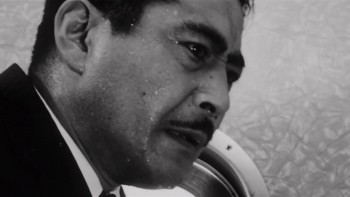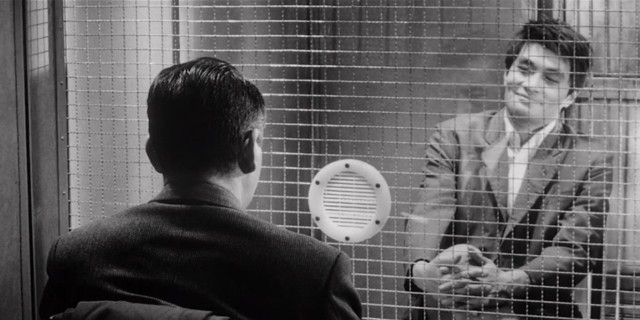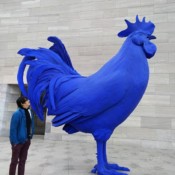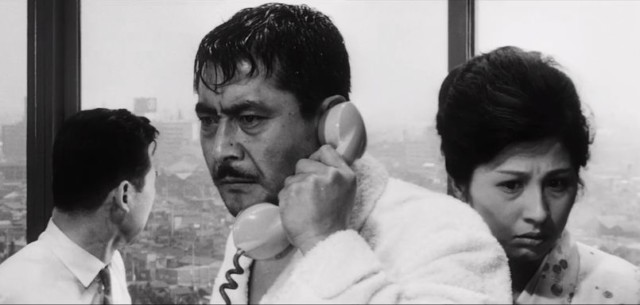Japan arose from World War II scarred to the core. The post-war economic boom would transform the country into one of the world’s wealthiest in the 1970s and 80s. But shortly after the war, it did little to heal the country’s collective psyche.
Despite industries sprouting everywhere, recovery and rebuilding was spotty at best. Even a decade after Japan’s surrender, large swathes of the population were still in financial ruin. People were also dying of starvation.
Ahmad Coo is a producer and copy editor for the Global Business show on CGTN America. His analysis represents his views alone.
But there were exceptions, like the businessmen and entrepreneurs who sought to revive their country’s economy. It’s amidst this background where Akira Kurosawa’s “High and Low” (“Tengoku to Jigoku” in Japanese, which literally means heaven and hell) is set. I consider it one of the greatest films ever made.
It’s based on a mystery novel titled “King’s Ransom” written by Ed McBain. The work also features one of the most suspenseful train scenes ever shot on film. Originally released in 1963, it’s been remastered for the Criterion Collection and is available for video streaming on FilmStruck in the U.S.
“High and Low” is set in a Yokohama in transition. Large areas of the city were filled with jerry-built homes, made with whatever scrap material the residents could get. It wasn’t a pretty city after the war- except for neighborhoods where the wealthiest families lived.
When the film opens, we see Kingo Gondo in his palatial home meeting with his business partners. Toshiro Mifune’s portrayal of the main character is probably one of his greatest achievements as an actor.
Gondo is abrasive, driven and ambitious. Unbeknownst to his business partners, he’s been planning a private takeover of the shoe company he’s running since hearing of the board’s decision to fire him. To do that, he’s had to take a sizable loan to buy a controlling stake.
But his plans are derailed when the son of his chauffeur is kidnapped. The kidnapper had plotted to take his son but took his playmate instead. The captor asks Gondo for a ransom that’s approximately the same amount of the loan he’s taken from the bank. For reasons still unknown to Gondo at that point in the film, the kidnapper was intent on driving the millionaire entrepreneur into ruin. Gondo is then faced with a dilemma: choose to become the ultimate master of his business empire or lose everything to save the boy.

Toshiro Mifune (Kingo Gondo) Courtesy: Criterion Collection
Gondo’s dilemma echoes a wider national debate prevalent at that time. Besides being a compelling police procedural, “High and Low” is also a film about the denigration and decay of a society pursuing a recovery and economic growth at any price, even if it costs one’s humanity.
Akira Kurosawa doesn’t shy away from painting a grim picture of Japanese society after World War II. He makes Yokohama look and feel like a cesspool of corruption and ruin. Everywhere you turn it’s dark and decrepit, with danger seemingly just lurking around the corner. It was a society in steep decline and one’s survival depended on one’s wits and desperation.
It’s a worldview that probably a lot of the Japanese then were familiar with. They had just been completely humiliated by the West- forcing them to rethink their place in the world. Tens of millions of citizens sacrificed themselves for Imperial Japan because they believed in their country’s greatness. But in defeat, the foundation of their civilization was shaken and cracked. It was only a matter of time before the rot would take hold.
In the absence of real order and crumbling societal structures, the Japanese were left to fend for themselves. That’s why gangs stepped into the void with the collapse of the government. Criminal activity surged- from the black market to prostitution and the illicit drug trade. The descent of Japanese society into criminality and corruption was probably shocking to Kurosawa who was widely considered a humanist.
According to several biographies about Kurosawa’s life, he was a firm believer in the Bushido- better known as the warriors’ code. At the very heart of that set of beliefs, humans are seen as innately good and capable of making moral choices.
It makes sense then that Kurosawa’s view of Japanese society in “High and Low” was an angry snarl. His films from that period dealt with similar themes, all centered on the increasing paranoia of a society in collapse. Gondo’s homicidal nemesis, who’s played by a very young Tsutomo Yamazaki, is also full of envy and rage- spewing bile and hatred at the inequities of modern Japan. His cynicism is all-consuming.

Toshiro Mifune (Kingo Gondo) and Tsutomu Yamazaki (Ginjiro Takeuchi) Courtesy: Criterion Collection
Gondo and the kidnapper represent a recurring theme in most of Kurosawa’s movies, namely the clash between good and evil. “High and Low” shares the same humanist DNA with his other films from that period which include “Drunken Angel”, “The Lower Depths”, “I Live in Fear”, “The Bad Sleep Well” and “Stray Dog”.
Though Gondo’s more human and compassionate side would prevail, the movie leaves you uncomfortable and unsettled. In the last few scenes, Kurosawa lets the audience have it, exposing the ugliness of a damaged man’s psyche and capacity for doing evil: the kidnapper serving as a metaphor for Japanese society after World War II.
 CGTN America
CGTN America
 Yutaka Sada (Aoki), Toshiro Mifune (Kingo Gondo) and Kyoko Kagawa (Reiko Gondo) Courtesy: Criterion Collection
Yutaka Sada (Aoki), Toshiro Mifune (Kingo Gondo) and Kyoko Kagawa (Reiko Gondo) Courtesy: Criterion Collection

